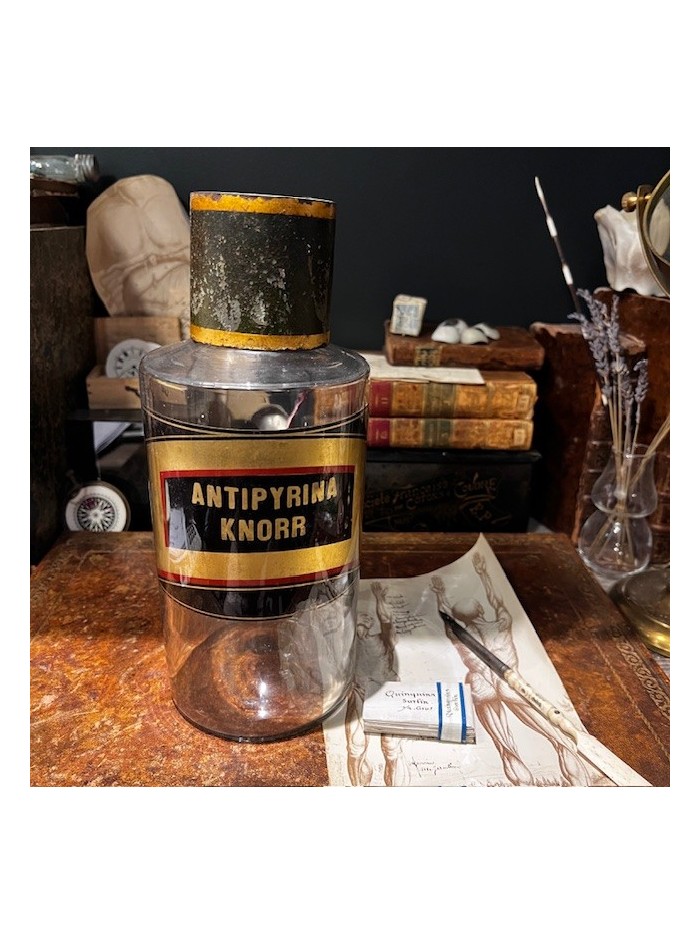
Dr Vée's lithium salts - Antique tin medicine box
Dr Vée's lithium salts
Antique tin medicine box
Empty









Antipyrina Knorr
Named after its German discoverer: Ludwig Knorr
Pharmacy jar - Herbalism - Apothecary bottle
Late 19th century
Antipyrina Knorr
Named after its German discoverer: Ludwig Knorr
Pharmacy jar - Herbalism - Apothecary bottle
Late 19th century
Mouth-blown glass, as the depression of the cane's pontil remains under the jar.
Black, red and gold label glued to the inside of the jar.
Tin stopper.
Antipyrin was created in 1883 by Ludwig Knorr as a substitute for quinine, also known as phenazone. Initially, it was a quinine substitute, then an analgesic, anti-inflammatory and antipyretic (designed to reduce fever), and was also used for its soothing effects on headaches. It was the first synthetic drug to be created, rather than obtained from natural elements such as plants or bark.
Antipyrin remained the world's most widely used medicine until aspirin dethroned it in the early years of the twentieth century.
Diameter 10cm. Height with cap 24cm
SOLD EMPTY
Dr Vée's lithium salts
Antique tin medicine box
Empty
Antique pharmacy bottle
BIOLACTYL Ferment Fournier - Early 1900
Teinture de Cantharides - POISON
Lytta vesicatoria - Spanish fly
Antique blue glass pharmacy bottle - Apothecary
Early 20th century - Blown glass.
Clastic Mannequin - Dr. Auzoux's anatomical skinned
An antique absinthe topette (decanter)
4 Beaded Topette
Crin de Florence - Antique suture thread
Catgut
Natural suture thread obtained from the caterpillar of the Bombyx mori butterfly.
Alum
Antique pharmacy bottle
Apothecary vial
Color pigments have been added to the inside of the jar
Armand Vaast nasal spray - Oil vaporizer - Antique remedy
In its box
Used in otolaryngology, it was intended for nasal or oral sprays in the treatment of colds and antiseptic treatment of the respiratory tract.
Carbonate de chaux - Lime carbonate
Antique pharmacy bottle - End of XIXth century
Blown glass
Pyramidon
Antique pharmacy bottle
Apothecary vial
Color pigments have been added to the inside of the jar
Potassium Bromide Elixir
Antique and large brown English pharmacy bottle
Dextrin powder - Starch - Pulvis Dextrinae
Antique pharmacy bottle
Blown glass
Iodeol externe
Antique pharmacy bottle
Apothecary vial
EMPTY
Grams / Tablespoons - Graduated bottle
in French: Grammes / Cuillères à soupe
Antique medicine bottle
Apothecary
Eau dentifrice de BOTOT
BOTOT toothpaste water
Antique pharmacy bottle
Apothecary

Antipyrina Knorr
Named after its German discoverer: Ludwig Knorr
Pharmacy jar - Herbalism - Apothecary bottle
Late 19th century








